When your nose is stuffy, it’s hard to fall asleep and stay asleep. One thing that can help is changing how you sleep. Lying on your back with your head slightly raised is usually the best. You can use a few pillows or a wedge to prop yourself up. This helps mucus drain better and keeps your airways open, so it’s easier to breathe.
Lying flat or sleeping on your stomach can make things worse. It can block drainage and make your sinuses feel more full. Raising your upper body helps reduce that pressure and lets air move more freely through your nose.
If your nose is congested from a cold, allergies, or sinus issues, the way you sleep can make a difference. Sleeping with your head elevated can help you breathe more easily and get better rest. You can also try using a humidifier or a nasal spray before bed to feel more comfortable.
Key Takeaways
- Elevating the head while sleeping helps reduce nasal congestion.
- Proper sleep position supports natural sinus drainage.
- Adjusting sleeping habits improves overall rest with a stuffy nose.
- The right mattress, combined with an elevated sleep position, supports sinus drainage, clears nasal passages more easily, and helps relieve congestion throughout the night.
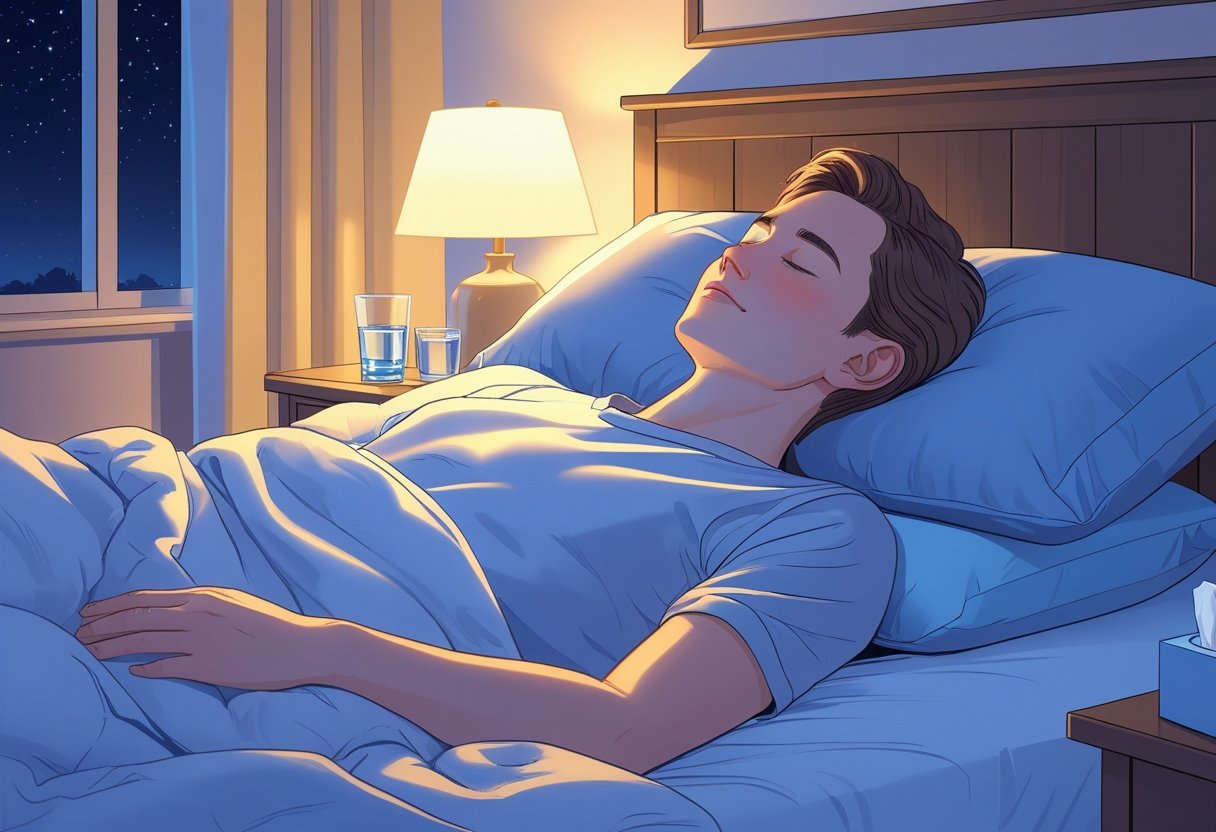
Understanding Nasal Congestion at Night
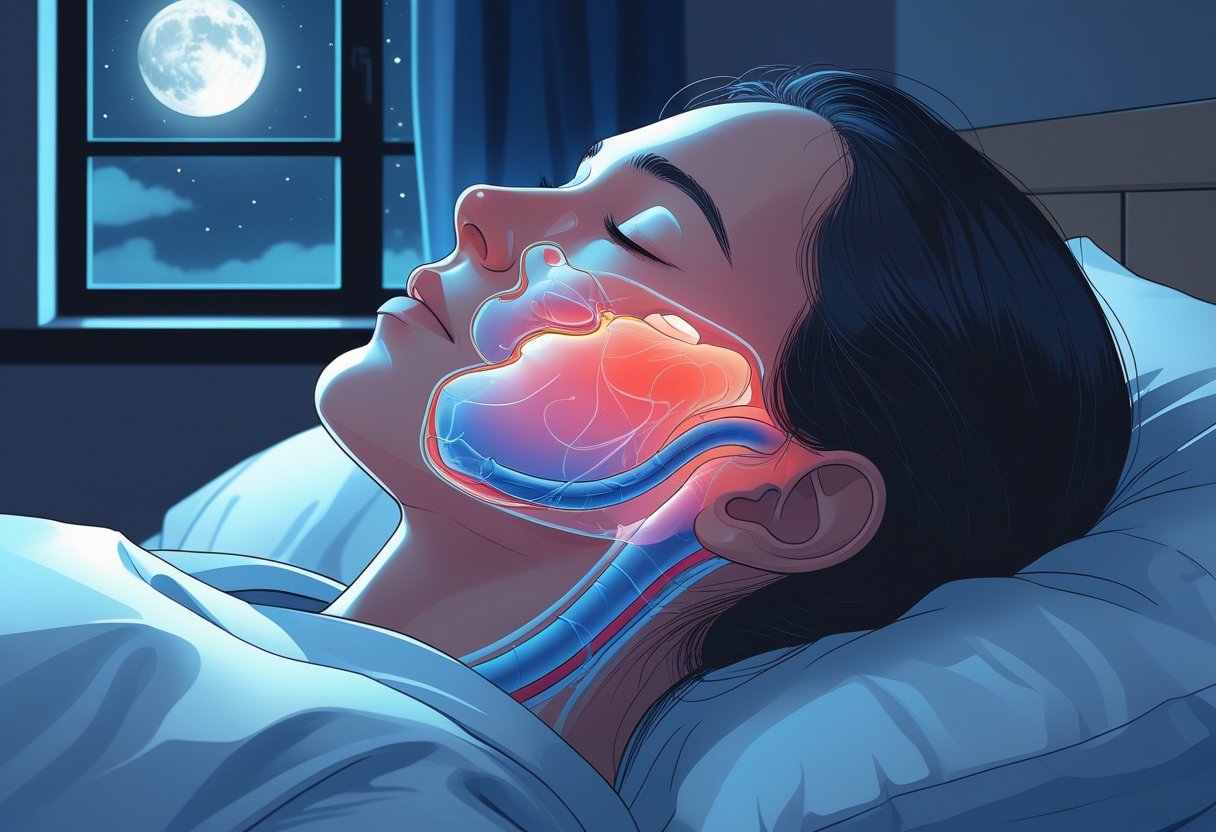
Nasal congestion at night can make breathing difficult and disrupt sleep. It occurs when the nasal passages swell or become blocked. Understanding the causes and knowing why congestion feels worse at night helps identify ways to ease a stuffy nose.
What Causes a Stuffy Nose at Night
A stuffy nose at night occurs when the lining inside the nose swells and blocks airflow. Common triggers include colds, allergies, and sinus infections. These conditions inflame the blood vessels and tissues within the nasal passages.
Other factors such as dry air, irritants, or certain medications may also lead to nasal congestion at night. While lying down, mucus tends to build up since gravity no longer helps it drain. This can block airflow further and make breathing through the nose more difficult.
Why Nasal Congestion Worsens During Sleep
Nasal congestion worsens during sleep because of body position and reduced airflow. When someone lies flat, blood flow increases in the nasal area, which can swell the tissues more. Sleep also slows the body’s ability to clear mucus from the nose. With gravity no longer assisting, mucus remains in the nasal passages and builds up. Meanwhile, the natural drying of nasal tissues overnight can thicken the mucus, adding to the blockage.
These combined effects make nighttime congestion more noticeable and uncomfortable. Changing sleep positions or using other remedies may help keep the nasal passages more open.
Best Sleeping Positions for a Stuffy Nose
Choosing the right sleeping position helps ease nasal congestion and improves breathing. Raising the head, picking the best side to sleep on, and avoiding certain positions allow mucus to drain more easily and make sleep more comfortable.
Elevated Head Position
Raising the head above the body helps mucus move out of the sinuses. Using an extra pillow or a wedge lifts the head by a few inches, which slows blood flow to the nose and reduces swelling and congestion.
Lying on the back with the head propped up at a 30- to 45-degree angle works well for drainage and prevents mucus buildup. Pillows or bed risers provide the needed tilt and help with easier nighttime breathing. Too much elevation may strain the neck, so a moderate height works best. This approach remains one of the most effective sleep positions for congestion and sinus relief.
Side Sleeping Recommendations
Sleeping on the side also benefits those with a blocked nose. Resting on one side keeps the upper nasal passage clearer, as gravity helps mucus drain from the lower side. Choose the side that feels less congested, usually the side where breathing feels easier. When unsure, try switching sides to find relief.
Avoid lying flat on the back after sleeping on the side, since it can make congestion worse. Side sleeping, especially with slight head elevation, often ranks just behind back sleeping for sinus relief.
Sleeping Positions to Avoid
Lying flat on the back allows blood to pool in the nasal passages, which increases swelling and blocks airflow. Stomach or face-down sleeping presses the face into the pillow and restricts nasal breathing. These positions also prevent proper sinus drainage.
Positions that fail to support head elevation or drainage often lead to worse symptoms. Anyone looking for the best sleep posture during congestion should avoid these to prevent restless nights and poor-quality sleep.
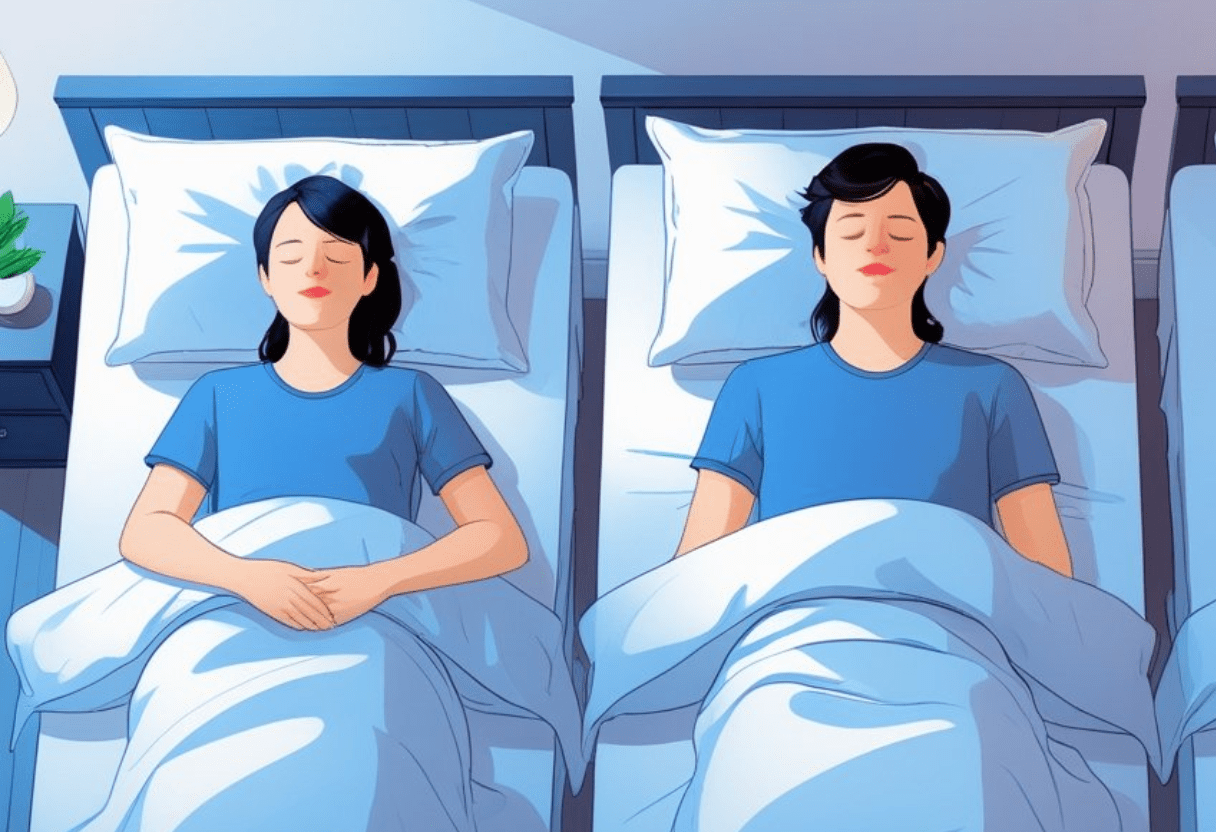
Optimizing Your Sleep Environment
Creating the right sleeping conditions eases nasal congestion and improves breathing. Adjusting air moisture and minimizing irritants both help clear a stuffy nose at night.
Controlling Room Humidity
Balanced humidity levels reduce nasal dryness and calm irritated airways. Aim for 40% to 60% humidity. Dry air thickens mucus, which clogs nasal passages. A humidifier adds moisture to the room, which helps loosen mucus and clear up congestion. Keep humidifiers clean to prevent mold or bacteria growth, which may trigger allergies. If a humidifier isn’t available, placing a bowl of water near a heat source raises humidity naturally.
Staying hydrated throughout the day also supports nasal health. When combined with proper room humidity, hydration offers a simple and effective way to manage nighttime nasal blockage.
Allergen and Irritant Management
Allergens and irritants often worsen nasal congestion during sleep. Dust mites, pet dander, smoke, and strong fragrances commonly act as triggers. A clean bedroom limits exposure to these irritants. Wash bedding in hot water to kill dust mites. Use allergen-proof covers on pillows and mattresses to form a protective barrier. Vacuum floors and upholstery with a HEPA filter to trap airborne particles.
Avoid smoking or using scented products near the sleeping area. Air purifiers improve indoor air by removing allergens. These habits ease nasal inflammation and make breathing easier through the night.
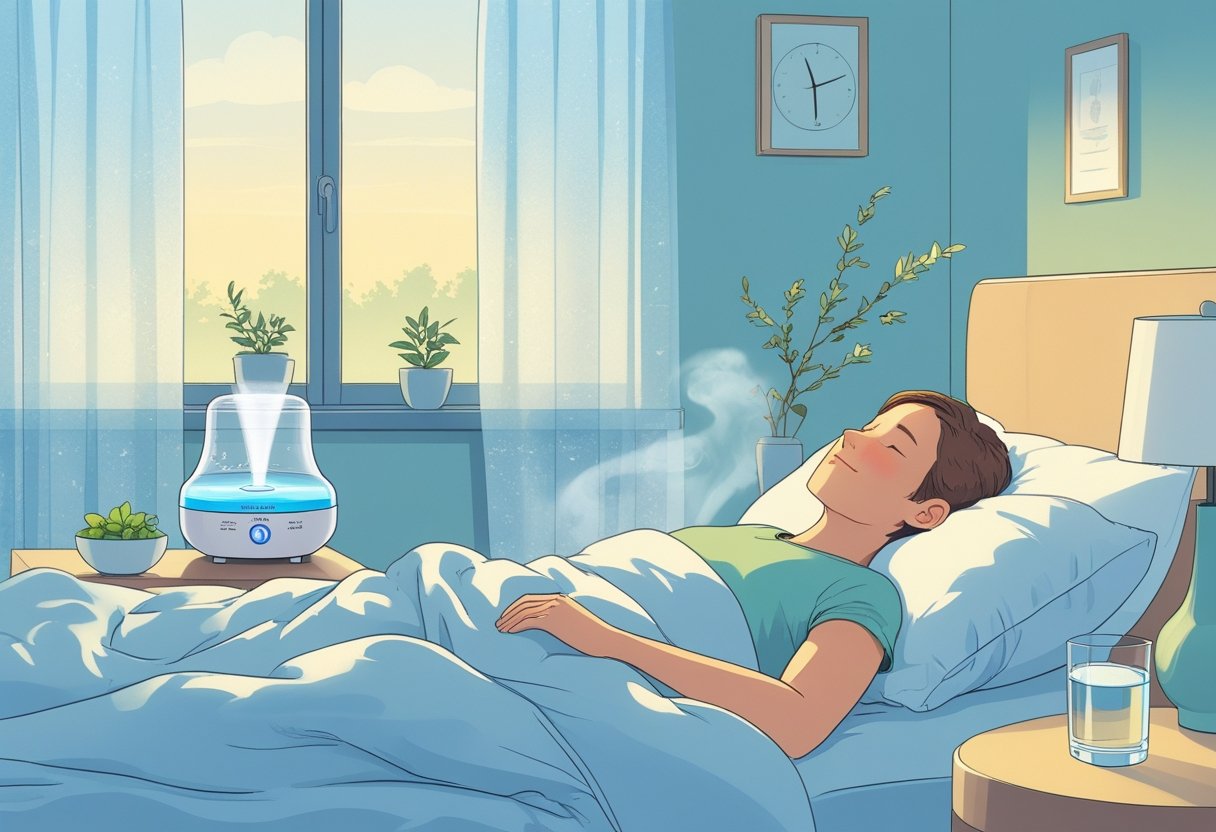
Immediate Relief Techniques Before Bed
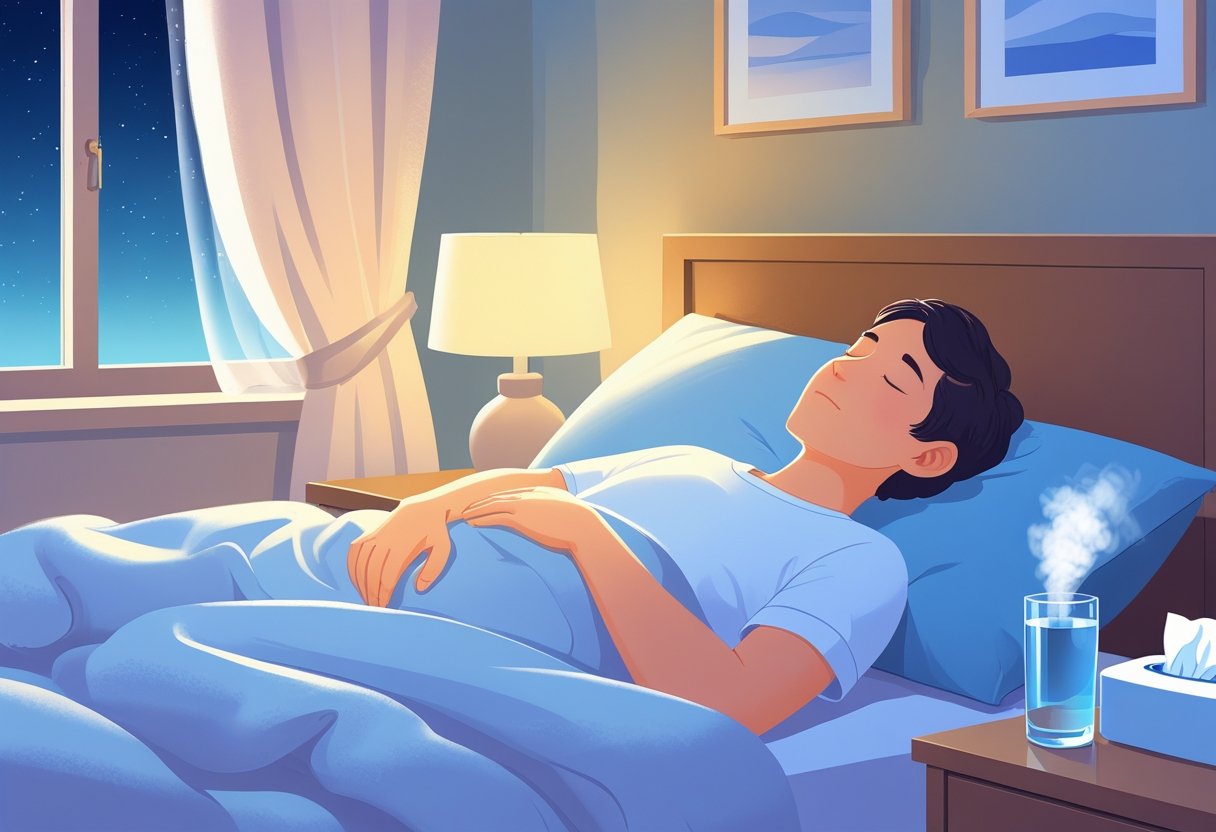
Using effective methods before sleep helps clear nasal congestion fast and eases breathing. These techniques aim to open nasal passages and reduce swelling so you can unstuff your nose quickly and rest better.
Nasal Strips and Decongestants
Nasal strips, adhesive bands placed over the nose, physically open the nasal passages. They pull the nostrils outward to make nasal breathing easier. This method quickly reduces blockage and unclogs the nose without medication. Decongestant sprays and oral decongestants shrink swollen blood vessels in the nasal lining. They offer fast relief from stuffiness but must be used with caution. Overuse may lead to rebound congestion and worsen symptoms. Limit spray use to no more than three nights in a row.
Both options are great in clearing a stuffy nose at night, especially before lying down. Using a nasal strip along with a decongestant spray increases the chance of breathing freely in bed.
Warm Compresses and Steam Inhalation
Placing a warm compress over the nose and cheeks reduces sinus pressure. The heat loosens thick mucus so it drains more easily. This soothing method eases irritation and relieves nasal blockage. Inhaling steam from hot water adds moisture to dry nasal passages and thins mucus. It unblocks the nose quickly by clearing out congestion. Breathe deeply through the nose while covering your head with a towel to trap the steam.
Warm compresses and steam both support the body’s natural way of clearing nasal passages.
Nasal Irrigation Methods
Nasal irrigation clears out mucus and allergens from the nasal passages using saline solutions. Tools like neti pots or squeeze bottles send a gentle stream through one nostril, flushing and moisturizing the airways. This method is great to get rid of a stuffy nose at night. It prevents mucus buildup and eases inflammation. Saline irrigation suits daily use and remains safe when done correctly.
Proper technique matters. Always use sterile, distilled water, and clean equipment to avoid infections. After flushing, stay upright and tilt the head forward to help drain any remaining fluid from the nose.
Long-Term Strategies for Managing Nighttime Congestion
Effective approaches to ease nighttime nasal blockage include targeted treatments and simple changes in daily habits. Tackling the root cause of congestion helps lessen symptoms over time and supports better sleep quality.
Treatment for Blocked Nose at Night
To treat a blocked nose at night, saline nasal sprays or rinses offer a safe way to clear nasal passages. These flush out mucus and allergens that trigger swelling. Over-the-counter nasal decongestant sprays may offer quick relief, though limiting use to three days helps avoid rebound congestion. When congestion continues, a doctor might suggest allergy medications or prescription treatments. Addressing allergies helps reduce inflammation, a major contributor to nighttime stuffiness. A humidifier also adds moisture to dry air, which keeps nasal tissues from drying out and becoming irritated.
Washing bedding and keeping pets out of the bedroom lowers exposure to allergens. These treatments work best when combined with a steady nighttime routine.
Lifestyle Changes for Better Sleep
Changing sleep position can reduce nasal blockage. Elevating the head with extra pillows encourages better drainage and limits nasal swelling. Sleeping on the side, rather than flat on the back, also keeps airways more open.
Environmental changes help too. Keeping the bedroom cool and free of irritants like smoke or strong fragrances lowers the risk of nasal irritation. Staying hydrated during the day allows mucus to stay thin and drain more easily. Steering clear of heavy meals or alcohol before bed reduces the likelihood of swelling. Following a consistent sleep schedule supports immune health and lowers the chance of recurring nighttime congestion.
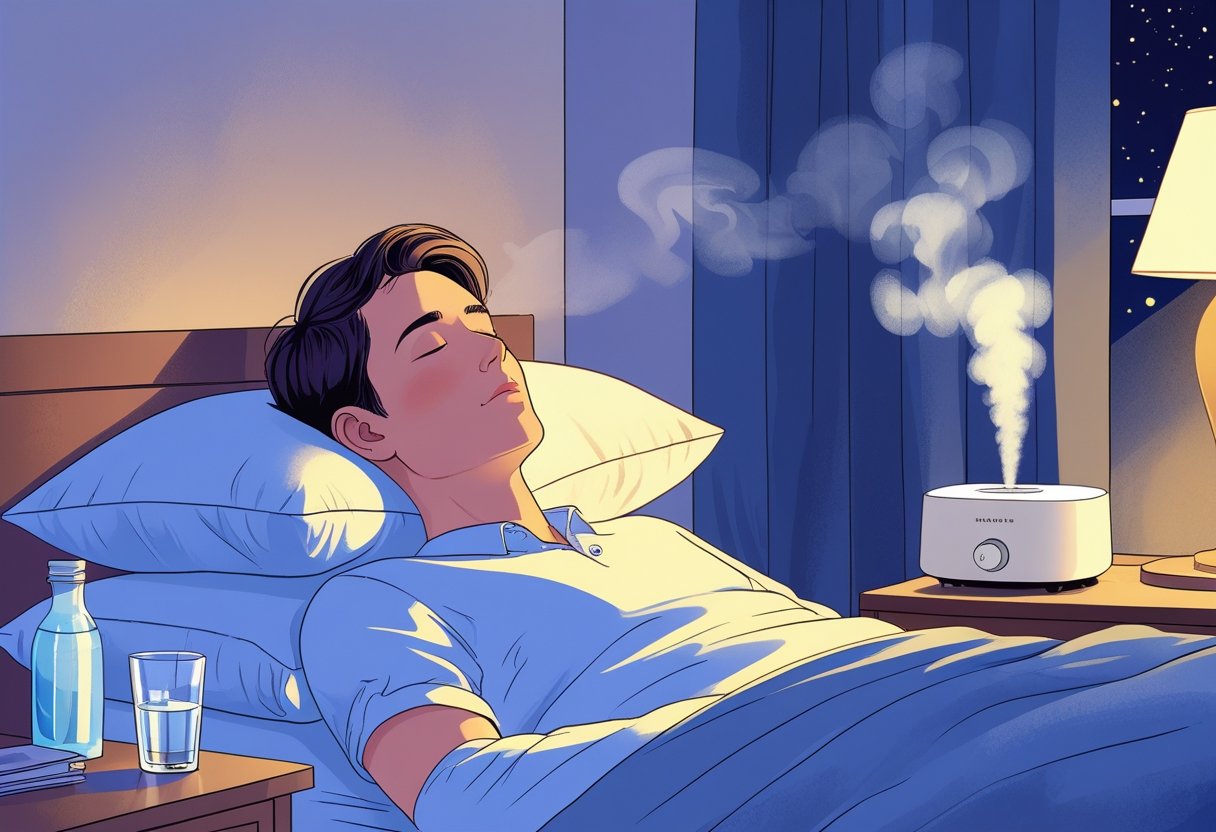
When to Seek Medical Advice
A stuffed nose clears up with home care, but certain symptoms require a doctor’s attention. Spotting signs that point to more serious issues helps avoid complications and ensures timely treatment.
Recognizing Dangerous Symptoms
Nasal congestion that comes with severe sinus pain, swelling near the eyes, or a high fever may suggest an infection needing medical care. Trouble breathing or frequent headaches also serve as warning signs.
Other red flags include:
- Green or yellow nasal discharge lasting beyond 10 days
- Loss of smell
- Chest pain or wheezing
- Intense sore throat with difficulty swallowing
Prompt attention to these symptoms matters. Waiting too long may lead to complications such as sinus infections or nighttime breathing problems, both of which can disrupt sleep.
Persistent and Severe Nasal Congestion
If a blocked nose continues for more than two weeks despite home remedies, it’s time to consult a doctor. Those who struggle to breathe through the nose while sleeping may face poor rest or worsen conditions like sleep apnea.
Trying common fixes like sleeping with an elevated head or using humidifiers without relief suggests something deeper. A doctor can check for causes like allergies, chronic sinusitis, or acid reflux. They may recommend medications or imaging tests to pinpoint the problem. Addressing the cause not only eases discomfort but also helps prevent issues like sore throat from mouth breathing or interrupted sleep cycles.
How Your Mattress and Sleep Position Can Ease Nasal Congestion
The right mattress and sleep position help when dealing with a stuffy nose. Elevating the upper body encourages mucus to drain from the sinuses, which eases pressure and relieves congestion. A wedge pillow or an adjustable mattress is great for this. Elevation lets gravity assist in clearing nasal passages, allowing for easier breathing throughout the night.
Sleeping on the back or side generally supports sinus drainage more effectively than lying on the stomach. Side sleeping encourages natural mucus flow, while keeping the head slightly elevated helps prevent buildup.
A mattress that provides good support and maintains proper spinal alignment improves comfort. When the neck and head receive proper support, breathing passages stay more open. And Saatva Solaire Adjustable Mattress meets these needs. It has 50 precise firmness settings on each side for personalized comfort. The mattress contains natural latex and gel-infused memory foam layers, which provide both comfort and support.
In addition to comfort, the Saatva Solaire Adjustable Mattress includes simple adjustment controls to help find the ideal elevation for your head and upper body. This feature suits those dealing with nasal congestion or breathing difficulties, as it allows customizing your position to encourage better sinus drainage during the night.
The following list outlines useful tips on mattress setup and sleep positions:
- Use a wedge pillow or adjustable mattress to raise the head.
- Sleep on the back or side, not the stomach.
- Choose a mattress that supports good spinal alignment.
- Avoid flat surfaces that may worsen nasal swelling.
A proper sleep setup, including mattress and position, promotes sinus drainage and helps reduce nighttime congestion.
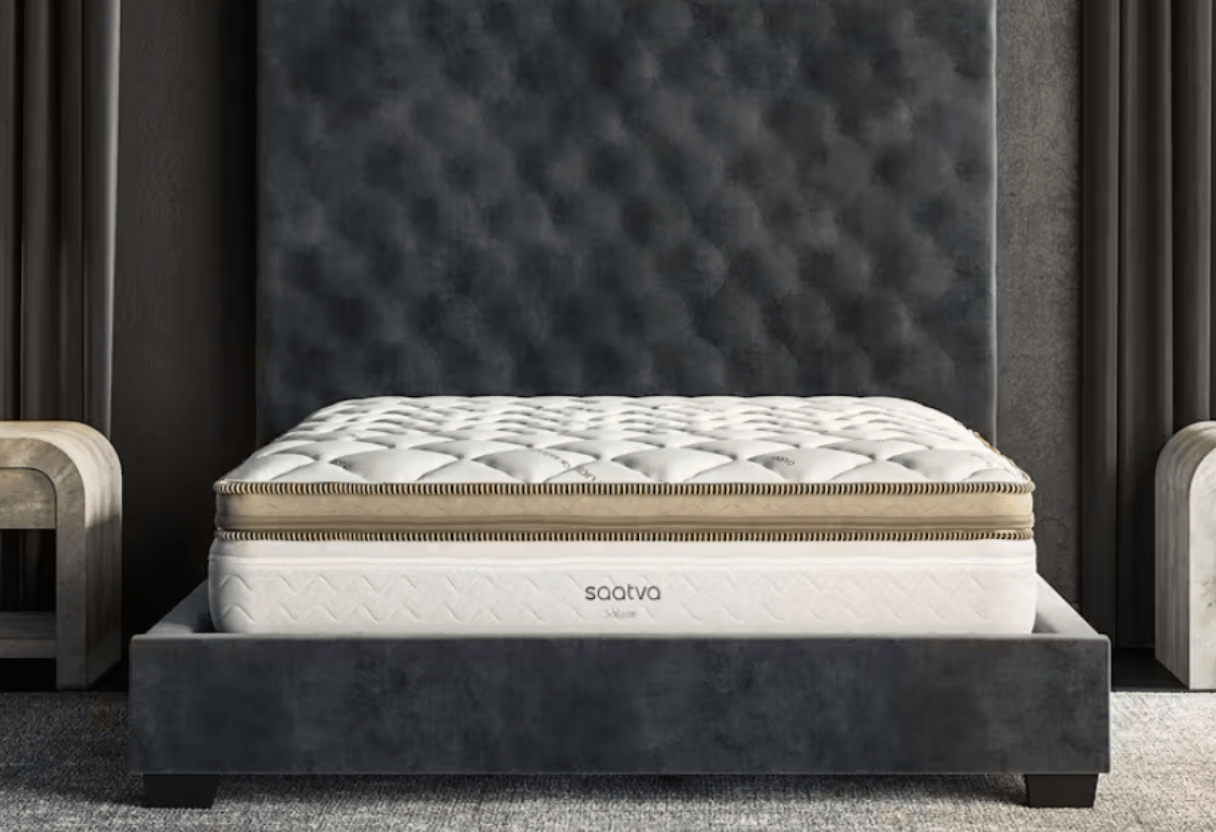
Frequently Asked Questions
Sleeping with a stuffy nose proves challenging, but certain positions and simple methods ease breathing. Elevating the head with pillows and controlling the environment reduces congestion. Home remedies and safe practices for infants also play important roles in improving sleep quality.







